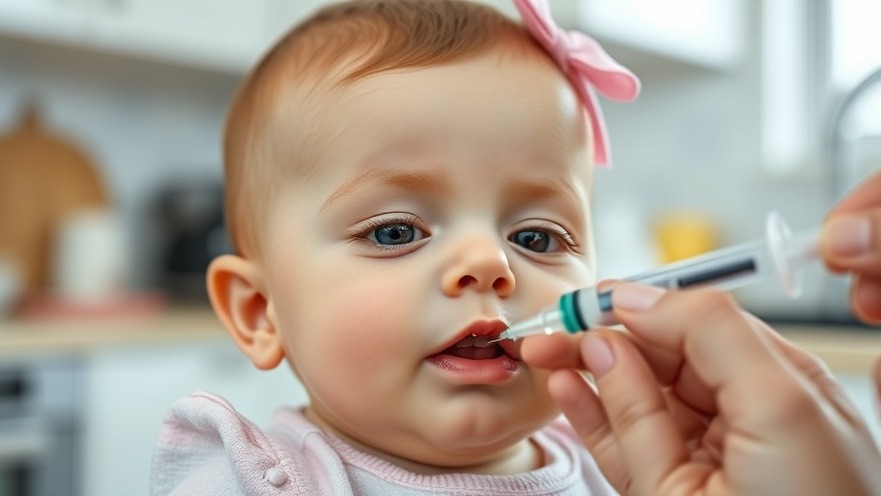
Understanding Iron Deficiency Anemia: A Common Yet Overlooked Condition
Iron deficiency anemia is a condition many parents may not recognize until it's too late. Defined simply, it occurs when the body lacks sufficient iron to produce hemoglobin, a key component of red blood cells responsible for oxygen transport throughout the body. While it's the most prevalent form of anemia globally, understanding its implications, especially in children, is essential for fostering their health and development.
Who is at Risk for Iron Deficiency Anemia?
Children—particularly infants and toddlers—are at the highest risk due to their rapid growth and increased nutritional needs. Low iron levels can stem from diet inadequacies, blood loss, or absorption issues. For instance, infants who are premature or consume excessive cow’s milk may be particularly vulnerable. Beyond early childhood, teenage girls also face greater risks as they lose iron during menstruation.
The Crucial Role of Diet in Iron Deficiency Anemia
An adequate diet is pivotal in both preventing and managing iron deficiency anemia. Parents should focus their child’s meals around iron-rich foods such as:
Lean meats and seafood
Legumes and beans
Dark leafy greens (like spinach)
Nuts and seeds
Fortified cereals
Eggs
A balanced diet not only supports overall growth but also contributes to cognitive development and emotional health.
Cow’s Milk: An Overlooked Culprit
One surprising factor that can lead to iron deficiency is the excessive intake of cow's milk in young children. While it's a common staple in many households, it’s important to note that cow's milk is low in iron and may inhibit the absorption of iron from other foods. For optimal health, children under one year should avoid cow’s milk entirely, and those aged between one and two years should limit their intake to 2-3 cups per day. This careful management can mitigate the risk of developing iron deficiency anemia.
How to Identify Iron Deficiency Anemia
Recognizing the signs of iron deficiency anemia can be vital for early intervention. Symptoms may include:
Persistent fatigue and weakness
Irritability and restlessness
Pale skin or shortness of breath
Cravings for non-food items like clay or dirt (known as pica)
If any of these symptoms are present, it’s crucial to consult a healthcare professional for appropriate tests and interventions.
Natural Remedies and Holistic Practices
Beyond dietary changes, several natural remedies can support iron absorption and addressing deficiency, including:
Vitamin C: Incorporate vitamin C-rich foods such as oranges and bell peppers alongside iron sources to enhance absorption.
Herbal Tea: Infusions, especially those containing nettle or dandelion, can provide a natural boost to iron levels.
Limit calcium intake during meals: For those overly reliant on milk, reduce calcium intake when consuming iron-rich foods to optimize absorption.
It's always advised to consult with a healthcare expert before starting any new supplement or drastic dietary change.
Proactive Steps for Prevention and Management
To empower parents in supporting their children's health, implementing a daily wellness routine can reinforce positive habits. Introduce:
Mindfulness practices: Teach kids to tune into their bodies and recognize when they're feeling fatigued or unwell.
Daily physical activity: Encourage regular movement through fun activities that promote both physical and mental health.
By fostering these habits early, parents can lay the groundwork for a lifetime of healthy living and resilience against potential health issues.
Take Action: Your Child’s Health Matters
As a parent, advocating for your child's well-being is paramount. Take charge by ensuring a balanced, iron-rich diet, recognizing symptoms, and seeking prompt medical guidance. For more health and wellness insights tailored to your family's needs, stay informed and proactive—the best health starts at home.
 Add Element
Add Element  Add Row
Add Row 



Write A Comment